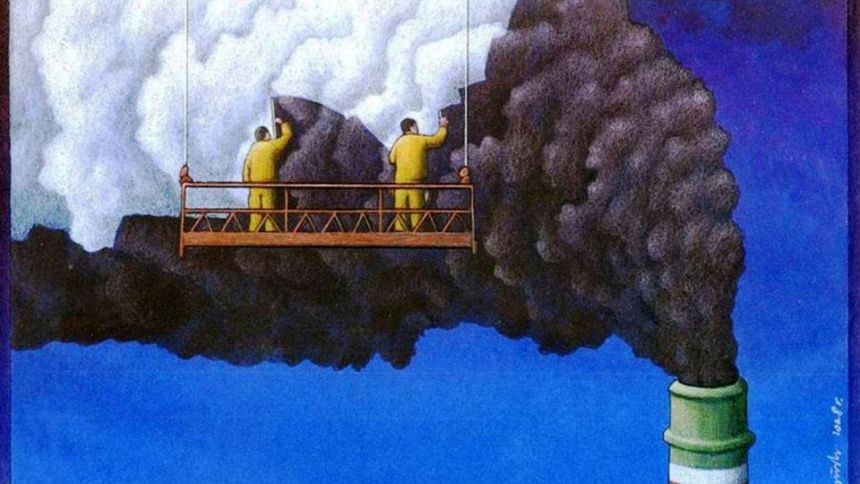Discoveries that can clean up carbon dioxide in the atmosphere

The Intergovernmental Panel on Climate Change concedes that limiting the rise in global temperature under two degrees Celsius before the end of this century is impossible without reducing emission of carbon dioxide to zero by 2050. However, the majority of scientists agree that zero emission alone will not solve the problem of global warming. That is because we have done too much damage to the climate to avoid catastrophe just by halting the burning of fossil fuels. Besides, the current concentration of carbon dioxide in the atmosphere would keep on trapping heat for hundreds of years.
So what's the way out? Despite the bleak outlook, we can still limit global warming to under two degrees by going carbon negative together with zero emission. Carbon negative means removing more carbon dioxide from the atmosphere than adding it.
The technique that is currently used to remove carbon dioxide from the atmosphere independent of its source is known as Direct Air Capture (DAC). Within the context of DAC, carbon dioxide is sucked out of the ambient air with a giant network of fans. Once carbon dioxide is trapped, it is liquefied and transported through pipelines and stored underground, often in natural reservoirs like depleted oil wells that can hold the gas for millions of years. There is also growing interest in storing the liquid carbon dioxide in saline aquifers due to their enormous storage capacity.
The companies that are at the forefront of DAC technology are Carbon Engineering in Vancouver, Climeworks in Zurich and Global Thermostat in New York. The Mercator Research Institute on Global Commons and Climate Change in Berlin claims that the company's DAC plant is the first of its kind to operate on an industrial scale.
Zero or near-zero emission of carbon dioxide could be achieved by using the Carbon Capture and Storage (CCS) technology. The process is similar to DAC technology except that CCS traps carbon dioxide from the exhaust stream of power plants, thereby preventing it from entering the atmosphere.
There are a handful of coal-fired power plants around the world that are using the CCS technology. The largest such plant, Petra Nova in Texas, captures around 5,000 tonnes of carbon dioxide per day from its exhaust. That is about 90 percent of all the carbon dioxide the plant produces.
Another zero-emission technique is known as Bioenergy with Carbon Capture and Sequestration (BECCS). It involves growing crops, burning them to generate electricity, capturing the carbon dioxide emitted during combustion and storing it deep down into the Earth's crust. Eventually, over the course of millennia, it is converted into carbonate rocks.
Clearly, BECCS obviates the need to extract fossil fuels, thus closing the carbon loop and enabling carbon neutrality by replacing fossil fuel with crops. There are about two dozen BECCS pilot projects operated by multi-national companies like Shell, Chevron and Archer Daniels Midland (ADM). Since 2011, ADM has been sequestering about a million tonnes of carbon dioxide per year.
At Sandia National Laboratories in Albuquerque, New Mexico, scientists are working on applying concentrated sunlight to the captured carbon dioxide to initiate reactions that yield carbon monoxide, hydrogen and oxygen. Because carbon monoxide and hydrogen are the basic chemical building blocks of synthetic fuels, they call this process "sunshine to petrol". Indeed, researchers have demonstrated that 75 percent of the carbon dioxide captured from the air can be converted into methanol. This shows that the main culprit of global warming can be recycled into useful products. Moreover, production of these carbon-recycled products would be carbon neutral or carbon negative.
Billions of tonnes of carbon dioxide could also be captured by rocks via a natural chemical reaction and permanently stored in an environmentally benign form, according to researchers at Columbia University in New York and the US Geological Survey. They found that when a rock, known as Peridotite, comes in contact with carbon dioxide, it converts the gas into harmless minerals such as calcite. This process is known as "carbon sequestration by mineral carbonation". They have also worked out a way to "grow enough of the [rock] to permanently store two billion or more tonnes of carbon dioxide annually."
Peridotite is exposed at the surface in many places on Earth. It is abundant on all the continents, except perhaps Antarctica. In Oman, this naturally occurring rock is sequestering about 100,000 tonnes of carbon dioxide each year. That is enough to soak up carbon dioxide emissions from burning more than 35 million litres of gasoline.
A power plant in Iceland that uses hot water from geothermal steam, which contains carbon dioxide, removes the gas from the steam and injects it into a volcanic rock called basalt. The rock reacts with carbon dioxide to form carbonate minerals in less than two years. Ongoing research suggests that this technique could be used to convert huge amounts of carbon dioxide into "rocks" and stow them underground.
Recently, De Beers—the world's largest diamond producer—announced that it would start a pilot project in South Africa designed to create the world's first carbon-neutral mine. Essentially, De Beers would inject carbon dioxide into kimberlite, an ore containing diamonds, where the two will combine to form a solid compound. The project is due to start sometime next year.
Although the idea of carbon dioxide absorption by rocks is still in the embryonic stage, the silver bullet to keep our planet's climate under control might be the rocks right under our feet. Until the technology to utilise these rocks is fully developed, DAC, CCS and BECCS will need to be a significant part of any realistic plan to assuage the effects of climate change while simultaneously mitigating the cause. Otherwise, we may soon be entering a new geologic era, which could be termed the "Anthropocene Era", one where the climate is very different from the one our ancestors knew.
Quamrul Haider is a Professor of Physics at Fordham University, New York.





Comments